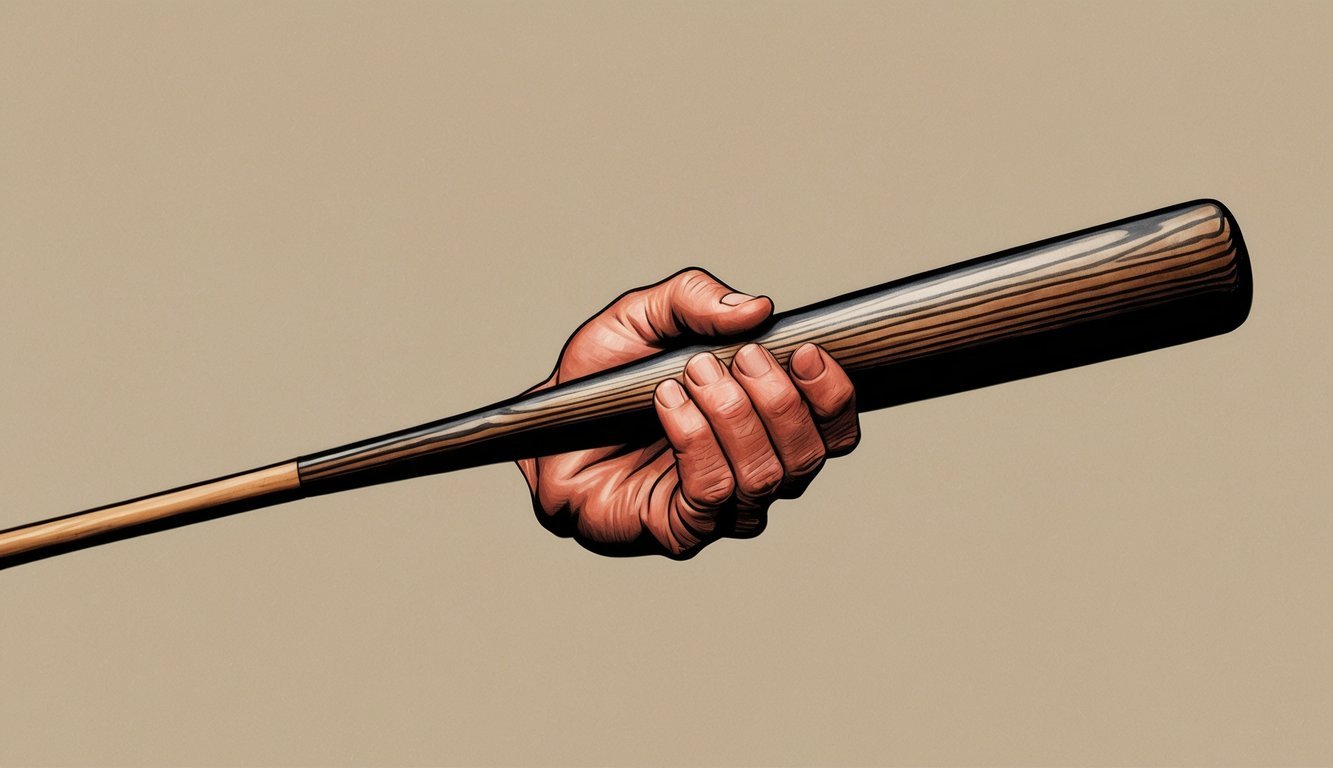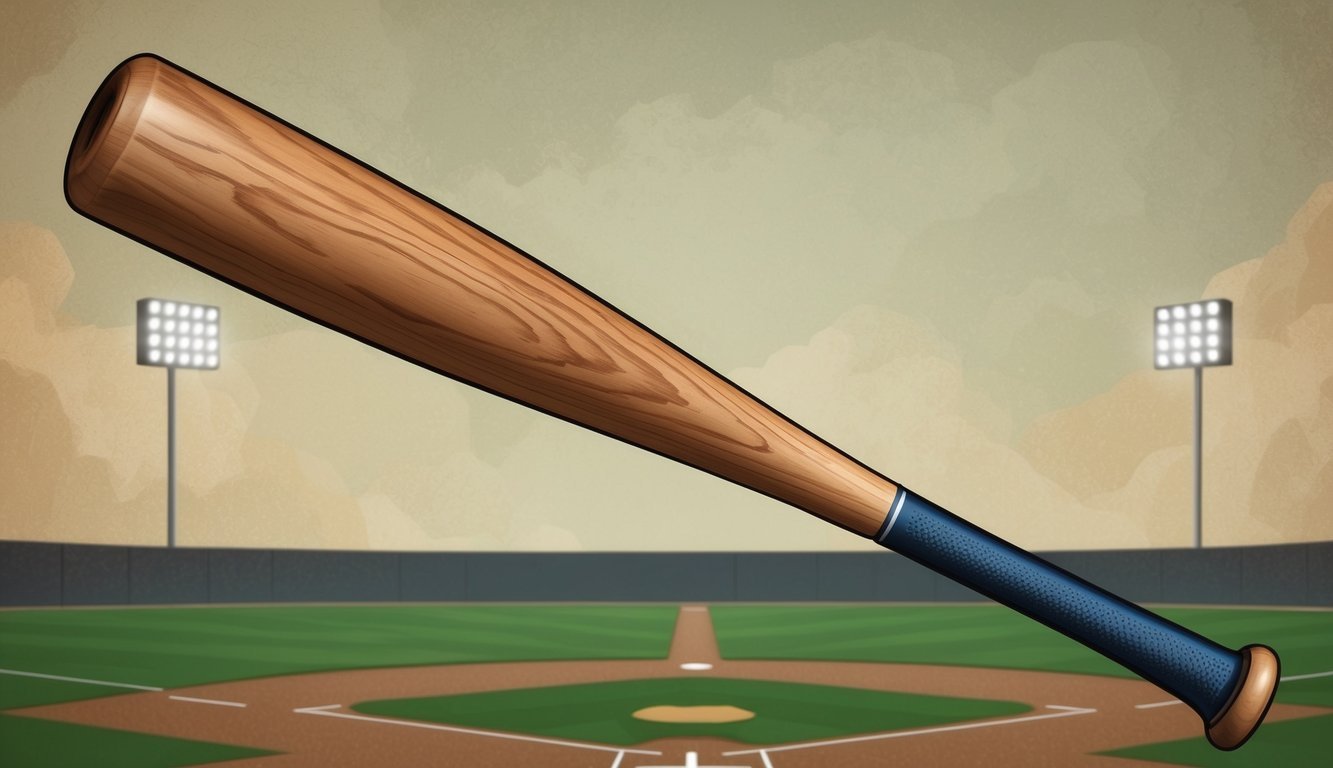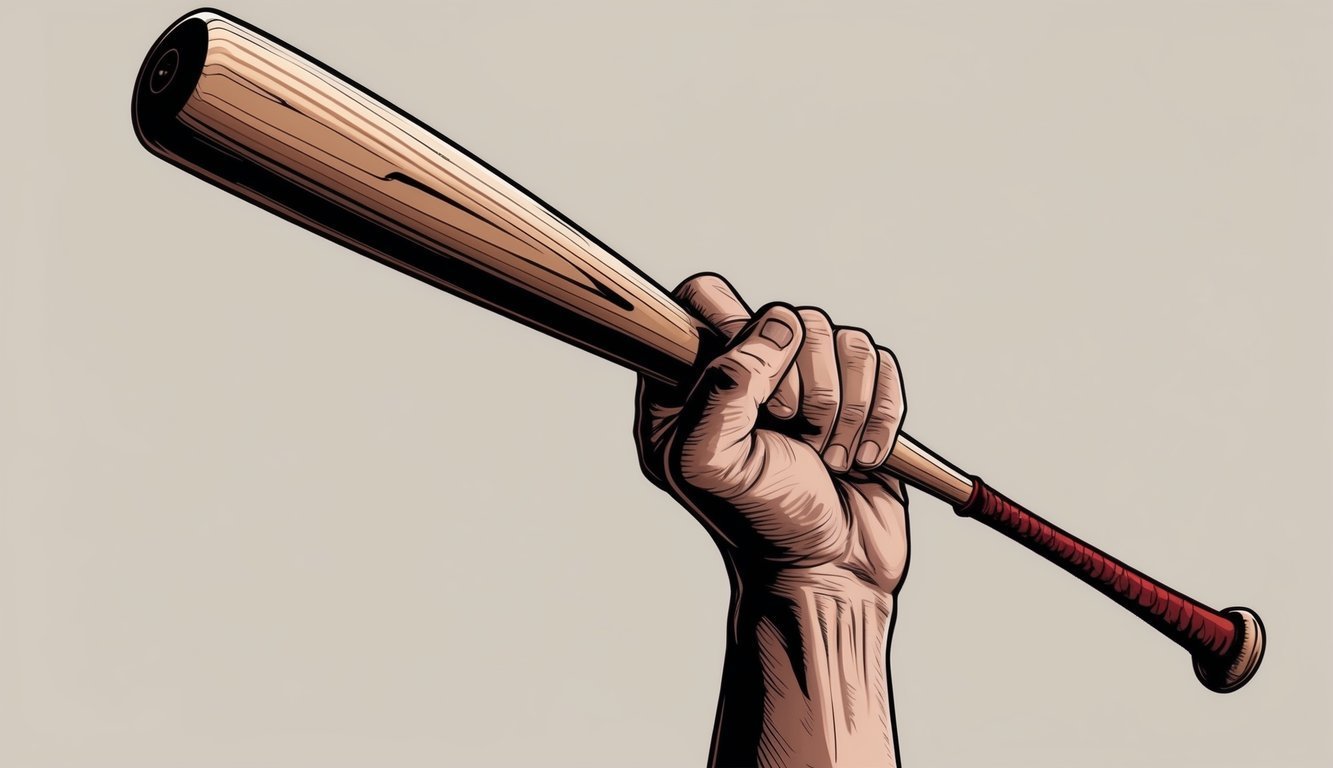Choking up on a baseball bat is a technique that can significantly impact a player’s performance at the plate.
By moving the hands higher up the handle, batters gain better control and increase their bat speed.
This adjustment allows hitters to make quicker contact with the ball, especially when facing high-velocity pitches.
Many professional players have utilized this technique to great effect.
Ichiro Suzuki, known for his exceptional bat-to-ball skills, frequently choked up to enhance his ability to make consistent contact.
This approach can be particularly useful when a batter needs to protect the plate with two strikes or wants to focus on placing the ball in a specific area of the field.
While choking up may sacrifice some power, it often leads to improved bat control and a higher likelihood of making solid contact.
This trade-off can be beneficial for players looking to increase their on-base percentage or adapt their approach based on game situations.
As baseball continues to evolve, mastering techniques like choking up remains an important skill for hitters at all levels.
The Basics of Choking Up

Choking up on a baseball bat is a fundamental technique that can significantly impact a player’s performance at the plate.
It involves adjusting the grip to enhance control and improve contact.
Understanding the Grip
Choking up refers to moving the hands slightly up the handle of the bat, away from the knob.
This adjustment shortens the effective length of the bat.
Players typically choke up by 1-2 inches, though the exact amount can vary based on personal preference and situation.
To choke up, simply slide both hands up the bat handle together, maintaining a comfortable and firm grip.
The pinky finger of the bottom hand should rest just above where it would normally sit at the knob.
This new hand position becomes the base for the swing.
Benefits of Choking Up
Choking up offers several advantages to batters.
It increases bat control, allowing for more precise swings and better contact with the ball.
This technique is especially useful when facing tough pitchers or in two-strike situations.
The shortened bat makes it easier to get the barrel through the strike zone quickly.
This can lead to improved timing and the ability to foul off tough pitches.
Choking up often results in a quicker, more compact swing.
Many players find that choking up helps them feel more comfortable at the plate.
It can boost confidence by providing a greater sense of control over the bat.
While it may slightly reduce power, the trade-off in improved contact and control is often worth it for many situations in a game.
Technical Aspects
Choking up on the bat affects key elements of hitting mechanics and timing.
This technique changes the physics of the swing and allows batters to adjust for different pitch speeds.
Swing Mechanics
Choking up reduces the bat’s effective length, altering its rotational inertia.
This change makes the bat feel lighter and easier to control.
With less mass at the end of the bat, players can generate quicker, more compact swings.
The shortened grip decreases leverage but improves bat speed through the hitting zone.
This trade-off often results in better contact, especially on inside pitches.
Players like Ichiro Suzuki mastered this technique to increase their bat-to-ball skills.
Choking up also shifts the bat’s sweet spot closer to the hands.
This adjustment can help batters make more consistent contact, particularly when facing tough pitchers or in two-strike situations.
Adjusting for Pitch Speed
Choking up gives batters more time to react to incoming pitches.
By shortening the bat, hitters can delay their swing initiation slightly while still getting the barrel through the zone quickly.
This extra split-second for pitch recognition is crucial against high-velocity fastballs.
It allows batters to better identify pitch type and location before committing to their swing.
For slower pitches, choking up helps batters avoid getting out on their front foot.
The quicker bat speed lets them wait longer and still drive the ball effectively.
Many players adjust their grip based on the situation.
They might choke up with two strikes or against a hard-throwing reliever, then use a standard grip in power-hitting counts.
The Impact on Batting
Choking up on the bat affects several aspects of a player’s hitting approach.
It influences both control and power, while also playing a role in a batter’s ability to hit for average.
Control vs. Power
Choking up on the bat gives hitters more control over their swings.
By gripping the bat higher, players shorten the distance the bat travels through the hitting zone.
This results in quicker, more compact swings that can help batters catch up to fast pitches.
The trade-off is a potential loss of power.
With less bat length to generate force, hits may not travel as far.
However, many players find the increased control worth this sacrifice in certain situations.
For some batters, choking up actually increases bat speed.
The lighter feel of the bat allows for quicker swings, which can translate to harder contact in the right circumstances.
Hitting for Average
Choking up often leads to improved batting average.
The enhanced bat control allows hitters to make more consistent contact with the ball.
This technique is particularly useful when facing tough pitchers or in two-strike counts.
Players who choke up tend to hit more line drives and ground balls.
While this may reduce home run potential, it increases the likelihood of getting on base.
Many successful hitters use this approach to become tougher outs and raise their on-base percentage.
Ichiro Suzuki, known for his exceptional bat-to-ball skills, frequently choked up.
This technique contributed to his impressive career batting average and hit total.
Coaches often encourage struggling hitters to choke up as a way to simplify their swing and focus on making solid contact.
Strategies for Different Situations

Choking up on the bat can be a game-changer in certain baseball scenarios.
This technique offers advantages when facing challenging pitchers or high-pressure moments.
Facing Power Pitchers
When up against hard-throwing pitchers, choking up helps batters catch up to fastballs.
It shortens the swing path, allowing for quicker bat speed.
This adjustment is especially useful against pitchers known for high-velocity pitches.
Major league hitters often employ this strategy when facing top-tier closers late in games.
By moving their hands up the bat an inch or two, they gain better control and can react faster to 95+ mph heaters.
Some batters also choke up to combat nasty breaking pitches.
The shortened grip gives them a split-second longer to identify the pitch type and location.
Additionally, by adjusting their grip, batters can improve their bat control, allowing them to make better contact with challenging pitches.
This technique is particularly effective when facing pitchers who utilize knuckle curve grip techniques, as it enables batters to prepare for unpredictable movement.
Ultimately, choking up can be a strategic adjustment that enhances a batter’s overall performance in high-pressure situations.
Coping with High Pressure At-Bats
In two-strike counts, many players choke up to protect the plate and avoid strikeouts.
This defensive approach increases contact chances and puts the ball in play more often.
Choking up can boost a batter’s confidence in clutch situations.
It provides a feeling of greater bat control, which can be calming in high-stakes moments like late-inning rallies or playoff games.
Some coaches encourage young players to choke up with runners in scoring position.
This technique can help focus on making solid contact rather than swinging for the fences.
For players struggling with slumps, temporarily choking up may help rediscover their timing and rhythm at the plate.
Advice from the Pros

Many legendary hitters and modern players have shared valuable insights on choking up on the bat.
Their techniques and approaches offer practical wisdom for batters at all levels.
Legendary Techniques
Barry Bonds, known for his impressive home run record, occasionally choked up on the bat to improve contact.
This technique helped him maintain control and power, even with a shorter grip.
Tony Gwynn, a master of bat control, frequently choked up to enhance his ability to place hits precisely where he wanted them.
Ty Cobb, one of baseball’s greatest hitters, advocated for choking up.
He suggested leaving an inch or two at the end of the bat handle, believing it improved bat control and speed through the hitting zone.
Modern Players’ Approaches
Joey Votto is known for his exceptional plate discipline.
He uses a choke-up grip to battle tough two-strike counts.
This adjustment allows him to protect the plate better and make contact with challenging pitches.
Hunter Pence, with his unique batting style, sometimes employed a choke-up grip to increase bat speed and quickness to the ball.
This technique helped him adapt to different pitching styles and maintain his effectiveness at the plate.
Many current players use situational choking up.
They adjust their grip based on the count, pitcher, or game situation.
This flexible approach allows them to balance power and contact as needed throughout their at-bats.
